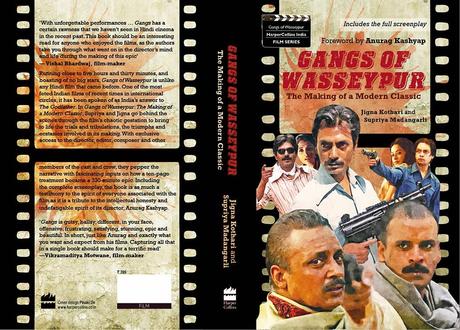 There
are “cult” films. Then there are “classics”. But, have a run through the films of
the world and very few would be branded as “cult modern classics”. Gangs of
Wasseypur has in its own way redefined Indian cinema. It runs for over five
hours and was released in two parts over a short period of time. While the
film’s director, Anurag Kashyup, has a cult-like following of his own, the
movie has very little star power and relies heavily on a story that spins over
three generations and has a very raw and rustic feel to it.
There
are “cult” films. Then there are “classics”. But, have a run through the films of
the world and very few would be branded as “cult modern classics”. Gangs of
Wasseypur has in its own way redefined Indian cinema. It runs for over five
hours and was released in two parts over a short period of time. While the
film’s director, Anurag Kashyup, has a cult-like following of his own, the
movie has very little star power and relies heavily on a story that spins over
three generations and has a very raw and rustic feel to it.
It comes as no surprise that there is already a book that has been written on it. I’m glad about that. What I am really ecstatic about is that the director and the others members involved in the making of the film opened up to the writers in a way that I haven’t seen often, especially in the cut-throat business of films.
Jigna Kothari and Supriya Madangari give us a book that is well structured, simple yet intelligently written, and most importantly intensely researched. What they give the reader is an inside look at the madness that goes behind making a film. Talking to people involved in Gangs of Wasseypur I and II, in some way or another, they explore the origins of the idea and follow it through its birth as a script, the teething troubles of changing producers during infancy, the problematic time when the film develops, slowly and “organically”, and begins to take control of its own, to finally the time it announces its arrival with élan.
Gangs of Wasseypur: The Making of a Modern Classic assumes you have seen the film. If not, you are most likely to get confused early on. The book isn’t as complex as the story of the film, but nevertheless, a good understanding of the film will add to the enjoyment and the nuances that the book tries to explore and explain through its pages. The miscellaneous interviews with the cast members and the people behind the scenes are an eye opener on the workings of the film world. The dedication and hardships faced by the makers is also impressive and might even work as an important lesson for those that are under the impression that making films is a rather glamorous job. There is a lot that happens before fame and fortune can finally touch your feet, and this book is proof of that.
The one person that is given the biggest credit for the success of Gangs of Wasseypur is its director Anurag Kashyup, and rightly so. As a result there is a continuous and sometimes overbearing presence of his throughout the book. From his foreword, to the last chapter being a solo interview with him, he is everywhere. His input is no doubt important, especially when it comes to the progress of the script, and as the writers acknowledge that were it not for him, the book would have been something different, if at all there, still I would have loved maybe an in-depth “postscript” (the final chapter of the book) that included the marketing and release of the film, the effect the film had on people, and even a study into how Gangs of Wasseypur instantly became the cult modern classic that it is.
Anyhow, you cannot have everything, and in no way is the book incomplete because it more than attains what it starts out to achieve. Furthermore, the book, in the avatar that was sent to me, comes with the complete screenplay. Normally, this would not have interested me, but in this case, when I have had a chance to see how the film developed through what is called “organic film making” a process in which the film changes continuously and something that is coined as Anurag Kashyup’s style of film making, the screenplay makes for an interesting read.
Gangs of Wassypur: The Making of a Modern Classic is a must read for any cinephile and especially for those that have an interest in film making or plan to join the field.
Recommendation: If you remember the film quite well, it’s great to start off directly with the book, but if not, then I would recommend watching it before you read the book for full gratification. I do however strongly believe that you need to have watched the film at least once to truly appreciate the work that has gone into the book.
This is an unbiased review of the book that was sent by Harper Collins India. Thank you to the publishers for the opportunity.

